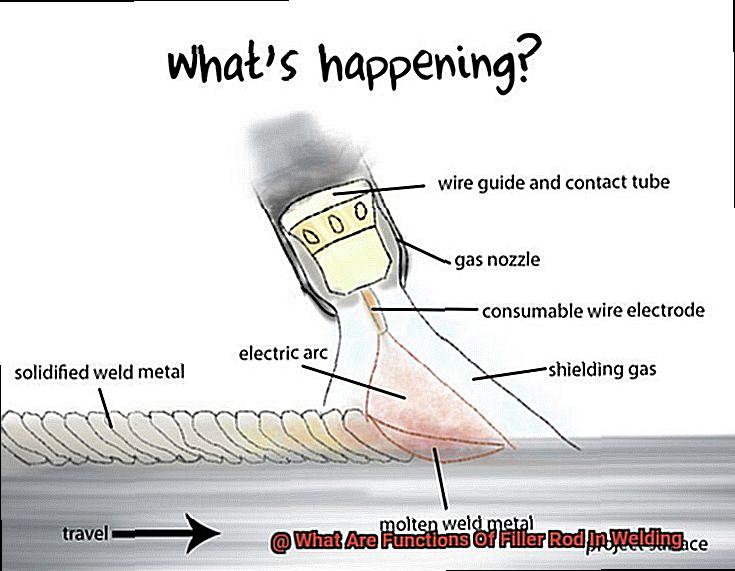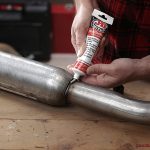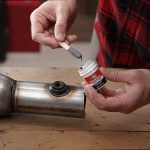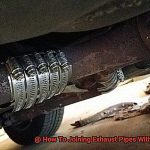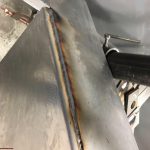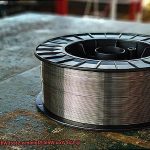Welding is a fascinating manufacturing process that involves melting metal sheets to join them and create a robust bond. It’s an essential technique used in various industries, and filler rods play a crucial role in welding. But what exactly are they, and why are they so important?
Filler rods are thin metal rods made of the same or different material than the two workpieces being joined. They melt during welding and fuse with the workpieces to create a strong bond. However, their significance goes beyond just providing extra material.
In welding, filler rods perform several critical functions that determine the weld’s composition and strength. By adding extra material to the joint, they make it more durable, resistant to cracking, and stronger overall. Additionally, filler rods help regulate heat input by controlling the amount of filler metal added. This way, they prevent overheating that could lead to warping or weakening of the metal’s structural integrity.
Are you curious about how filler rods work in welding? In this blog post, we’ll delve into their essential functions in detail. Whether you’re a seasoned professional or just starting as a welding hobbyist, you’ll learn something new and valuable about these crucial components in welding. So keep reading to become an expert on filler rods.
What Is a Filler Rod?
Contents
When it comes to welding, the secret to creating a strong, long-lasting bond between two pieces of metal is using the right filler rod. This essential metal wire fills gaps and provides additional material during welding, helping to create a joint that can withstand the test of time.
So, what exactly is a filler rod? It’s like a hot glue gun for metal. The rod is melted along with the base metal to create a strong bond between two parts. Filler rods come in different sizes and materials, depending on the type of welding being done. Aluminum, stainless steel, and mild steel are some of the most common materials used.
When selecting the right size of filler rod, welders must consider the thickness of the metal being welded. Thicker metals require larger diameter filler rods to ensure proper bonding and penetration. But why use a filler rod at all? For starters, it adds strength to the weld joint by reinforcing it with a stronger material than the base metal. This helps prevent cracking and other defects that could lead to failure over time.
Filler rods also play an important role in improving the appearance of the finished weld. By filling any gaps or imperfections in the joint, welders can create a smooth and even surface that looks more aesthetically pleasing.
Lastly, filler rods help control heat input during the welding process. By carefully selecting the size and type of filler rod, welders can regulate the amount of heat applied to the base metal. This is crucial because too much heat can cause distortion or warping of the metal, leading to a weaker and less stable weld joint.
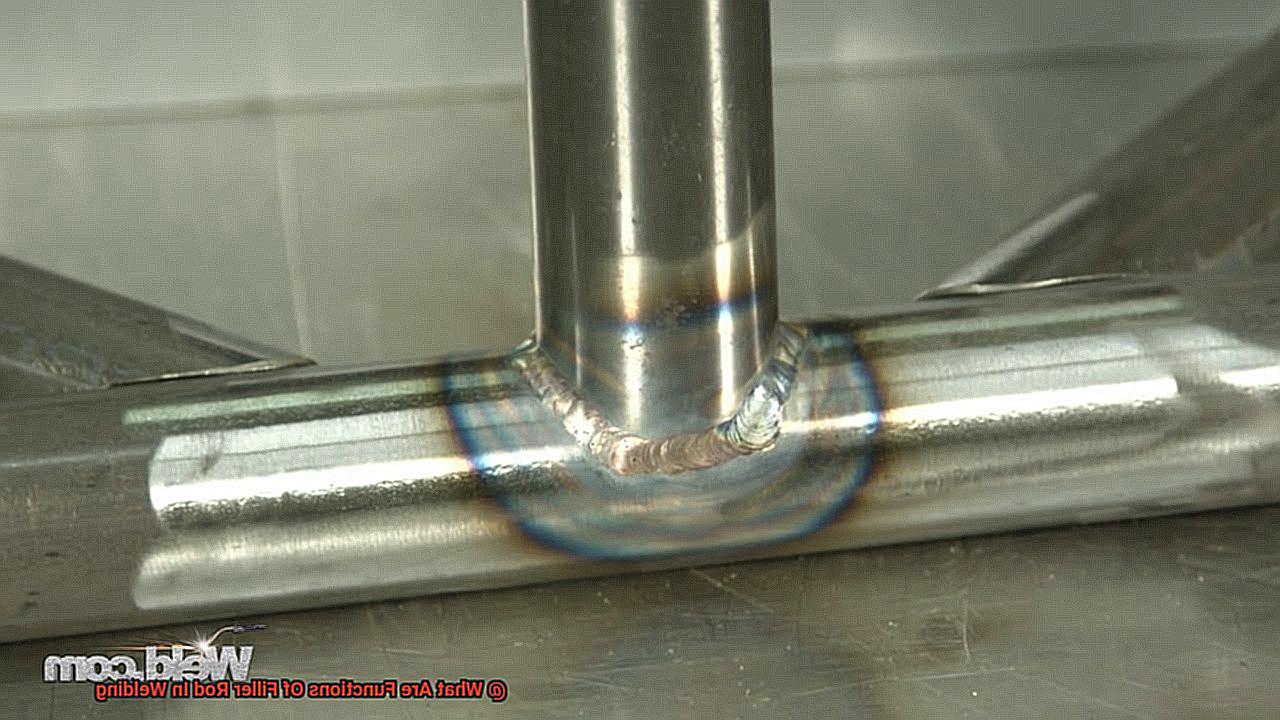
Function of Filler Rods in Welding
Welding is a precision craft that requires skilled hands and the right tools to ensure a strong, durable bond between two pieces of metal. One of the most crucial tools in welding is the filler rod, which serves several functions in the welding process.
At its core, the filler rod is used to provide material to fill the gap between two metals being welded. It’s melted into the weld pool to add metal to the joint and create a strong bond between the two metals. But filler rods do much more than just fill gaps.
Filler rods are made from various materials such as aluminum, titanium, and steel, among others. The selection of the filler rod material depends on the type of metal being welded and the welding process used. For example, when welding aluminum, an aluminum alloy filler rod is used because it has similar properties to the base metal.
Aside from filling gaps, filler rods also improve the mechanical properties of the weld. By adding filler material to the joint, weld strength and hardness are improved, which increases its load-bearing capacity. Plus, filler rods with specific alloying elements can be used to enhance corrosion resistance, making the weld more durable in harsh environments.
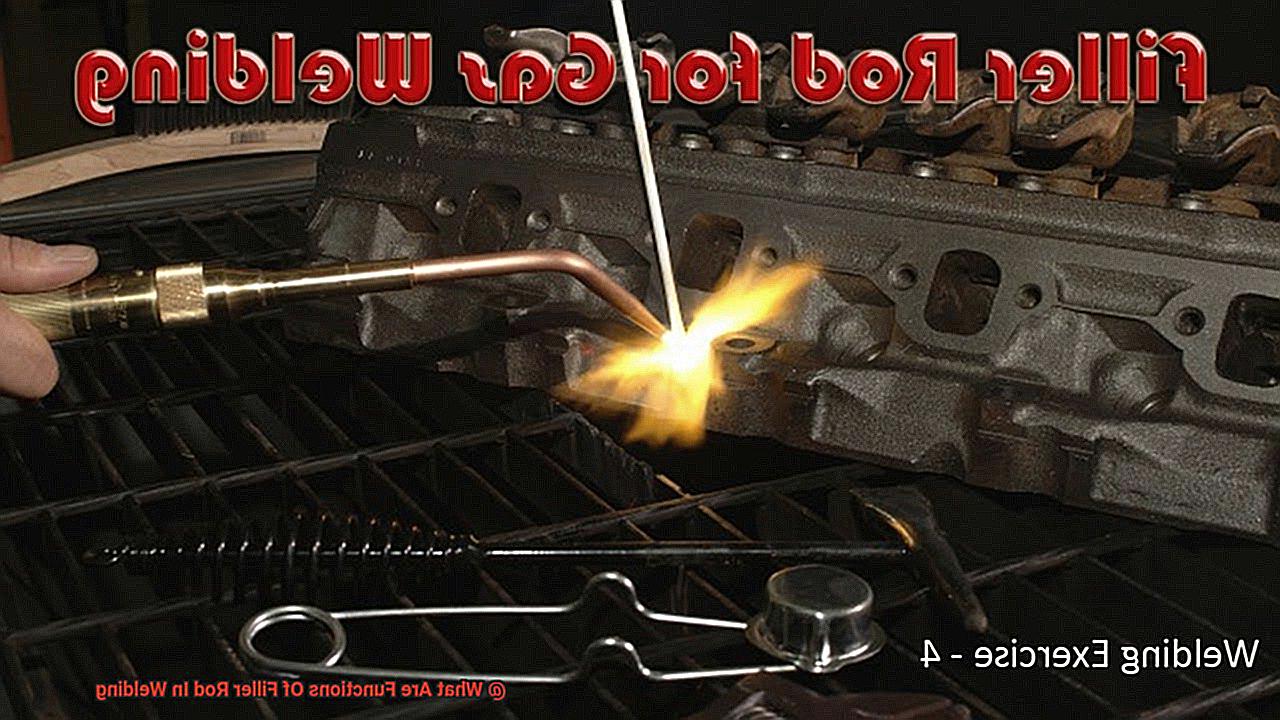
But that’s not all – filler rods also play a crucial role in controlling heat input during welding. The amount of heat applied during welding affects the quality of the weld, and too much heat can cause distortion and weaken the joint. By selecting the appropriate filler rod diameter and material, welders can control the heat input and maintain optimal welding conditions.
Using a filler rod in welding is like finding that missing piece in a puzzle – it completes the picture and creates a seamless bond between two metals. Conversely, using the wrong filler rod is like trying to fit a square peg into a round hole; it won’t fit properly, and your weld won’t be as strong or durable as it should be.
Strength of Weld Joint
But did you know that your choice of filler rod can also significantly affect the strength of your weld joint? Let me walk you through why.
Essentially, a filler rod acts as a missing puzzle piece that completes the picture of a strong and durable weld. It fills in gaps between two metal pieces, improves strength and durability, and controls heat input during welding. During the welding process, the filler rod melts along with the base metals and then solidifies to form a robust bond between the two pieces of metal.
So, how does your choice of filler rod impact the strength of your weld joint? It’s simple – if you need a high-strength weld joint, opt for a filler rod that has a tensile strength higher than that of the base metals. This ensures that your weld joint won’t be the weak point in your overall structure. Imagine building a bridge with one weak link – it wouldn’t hold up for long, would it?
But wait, there’s more. Filler rods can also help control heat input during welding. By selecting a filler rod with high thermal conductivity, heat can be quickly transferred away from the welding area, preventing overheating and potential damage to the metal being welded. It’s like having an efficient cooling system in your car – without it, your engine would overheat and break down.
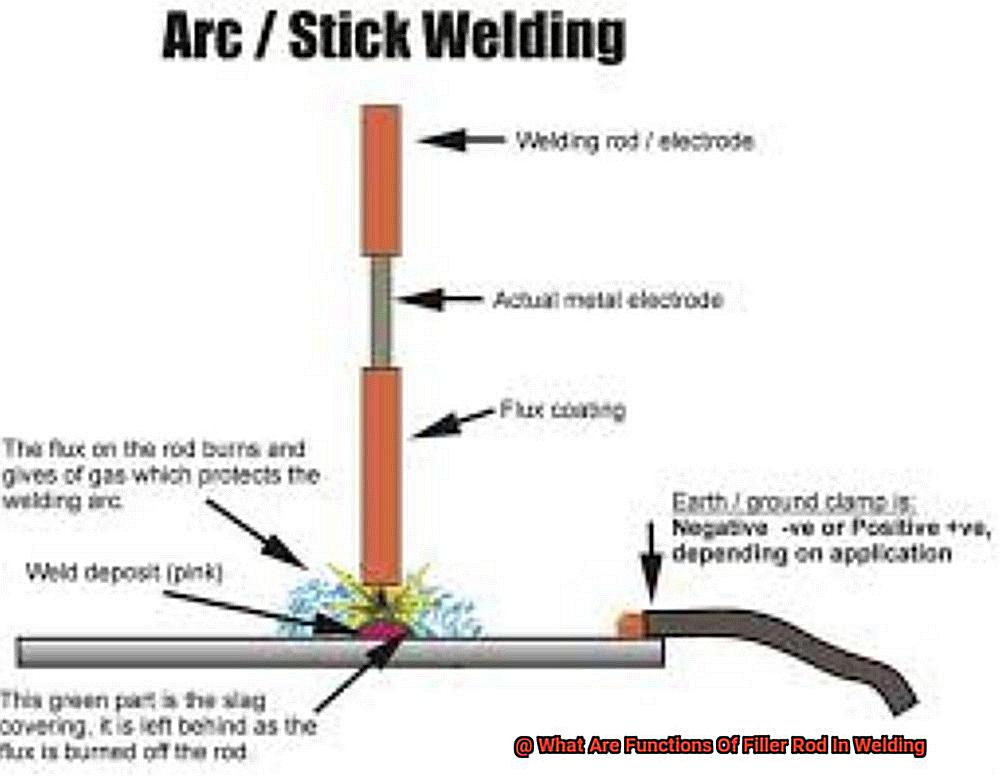
Aesthetic Appeal of Weld Joint
When it comes to welding, it’s easy to focus solely on functionality. However, aesthetic appeal plays a vital role in certain industries such as automotive and architecture. The filler rod is one of the key factors that can impact the overall appearance of the weld joint. Choosing the right filler rod is crucial to creating a smooth and consistent weld that enhances the final product.
To achieve an aesthetically pleasing weld joint, it’s important to consider the compatibility of the filler rod with the base metal. Using an incompatible filler rod can lead to a weak or discolored weld joint that could compromise the structure’s integrity. Additionally, the size and shape of the filler rod can affect the final appearance of the weld. A thicker filler rod may create a wider bead, while a thinner rod may produce a more precise and narrow weld.
The welding technique used also plays a significant role in achieving an appealing weld joint. Maintaining a consistent speed and angle while welding is crucial to creating an even and uniform weld bead. Any variations in these factors can result in an inconsistent or irregular appearance. It takes focus, patience, and attention to detail to create a visually stunning weld joint.
Lastly, proper post-weld cleaning and finishing is essential for enhancing the final appearance of the weld joint. Removing any spatter or debris and smoothing out rough edges can create a clean and polished look. Taking pride in your work and striving for perfection will pay off by creating a beautiful and functional piece.
Heat Input Control
If you’re looking to master the art of welding, then you need to get familiar with filler rods and heat input control. They are two essential aspects of welding that can make or break your weld joints. Heat input refers to the amount of heat energy that is applied to the materials being welded, and it’s crucial to get it just right. Too much heat can cause the materials to warp, distort, or even fail, while too little heat can result in weak welds that are susceptible to cracking and breaking.
That’s where filler rods come in. These handy little tools help to add material to the weld joint, which helps to dissipate excess heat and maintain proper temperature levels. But not all filler rods are created equal. The size and composition of filler rods can significantly impact heat input control during welding. Thicker filler rods require more heat energy to melt, resulting in higher heat input levels. On the other hand, thinner filler rods may require less heat but might not be as effective at dissipating excess heat.
Filler rods also play a vital role in improving the strength and durability of weld joints by filling any gaps or voids between the materials being joined. Additionally, they can be used to control the rate of cooling during welding. Rapid cooling can cause materials to become brittle and prone to cracking, while slower cooling rates can ensure stronger and more durable weld joints.
Ultimately, selecting the appropriate size and composition of filler rod for each job is crucial for achieving high-quality welds that meet the highest standards of quality and performance. Welders must take into account factors such as material thickness, joint design, and desired properties of the final weld joint when choosing their filler rod.
Types of Filler Rods
When it comes to welding, filler rods are like the trusty sidekick that helps the hero save the day. They may not be in the spotlight, but they play a critical role in achieving a strong and durable weld.
Choosing the right type of filler rod is crucial for welders, and there are various options available, each with its unique properties that make it suitable for specific welding applications.
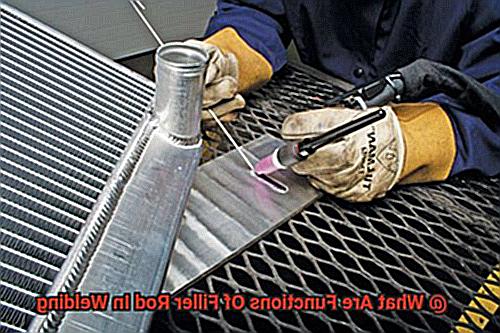
Let’s dive deeper into the most common types of filler rods used in welding.
First on our list is carbon steel filler rods. These are the workhorses of the welding world, primarily because they are affordable and versatile. Carbon steel filler rods are ideal for welding low-carbon steel and can be used in both MIG and TIG welding.
Next up, we have stainless steel filler rods. These filler rods contain high levels of chromium and nickel, which provide excellent corrosion resistance and durability. As their name suggests, stainless steel filler rods are used for welding stainless steel, making them an excellent choice for applications where corrosion resistance is crucial.
If you’re working with aluminum alloys, then aluminum filler rods are your go-to choice. These filler rods are lightweight, heat resistant, and have good conductivity, making them ideal for use in both MIG and TIG welding. Plus, they form a strong oxide layer that protects against corrosion.
For high-temperature applications such as aerospace and power generation, nickel alloy filler rods are used to weld nickel-based alloys. These alloys require a special type of filler rod due to their unique properties. Nickel alloy filler rods can withstand high temperatures without losing their strength or durability.
Finally, copper filler rods are primarily used for brazing and soldering applications. These filler rods have excellent thermal conductivity, making them ideal for joining copper pipes or wires.
Choosing the right type of filler rod depends on several factors such as the base metal being welded, the welding process being used, and the desired properties of the final weld. By understanding the different types of filler rods available, welders can make informed decisions about which one to use for their specific application.
Selecting the Right Filler Rod for Your Project
As a welder, you know that selecting the right filler rod for your project is like choosing the perfect tool for the job. Just as a carpenter wouldn’t use a hammer to saw a piece of wood, you can’t use just any filler rod for your welding project. In fact, choosing the right filler rod is crucial to the success of your project, and it all comes down to understanding its role in the welding process.
The filler rod is used to fill the gap between two pieces of metal that are being welded together. It not only helps in creating a strong and durable bond but also ensures that the final product has a clean and smooth finish. But its importance goes beyond that.
One of the main functions of the filler rod in welding is to provide additional material that is needed to make a strong joint. This is particularly important when working with materials that have different melting points or when joining two dissimilar metals. The filler rod acts as a bridge between the two materials, allowing them to be joined together seamlessly.
But that’s not all. Another critical function of the filler rod is to control the heat input during the welding process. By selecting the right filler rod, welders can regulate the amount of heat that is applied to the joint. This is important because too much heat can weaken the metal, while too little heat may not provide a strong enough bond.
Additionally, filler rods can also be used to enhance certain properties of the weld, such as corrosion resistance or strength. For example, some filler rods contain alloys that increase the strength of the weld, making it more resistant to bending or breaking. Other filler rods may contain coatings that help protect against corrosion.
So how do you choose the right filler rod? It all starts with understanding your project’s requirements. Consider factors such as material type, thickness, and desired properties when choosing a filler rod. Different filler rods are designed to work with specific materials, such as steel or aluminum. If you are welding two dissimilar metals together, you will need a filler rod that is specifically designed for that purpose.
Thicker materials require more heat input, so you will need a filler rod that can handle higher temperatures. On the other hand, thinner materials require less heat input, so you will need a filler rod that can produce a lower heat output. And depending on your needs, there are filler rods available that contain alloys or coatings that enhance specific properties of the weld.
Advantages of Using Filler Rods
And just like an artist needs the right brush, a welder needs the right filler rod. Filler rods are indispensable in the welding process and they offer several advantages that can elevate your welding game and help you achieve better results.
One of the most significant advantages of using filler rods is their ability to enhance the quality of your welds. They fill gaps between metal pieces and ensure that the weld is not only strong but also durable. Filler rods prevent cracking or other forms of damage, which is especially crucial when working with materials that are prone to these issues.
Moreover, using filler rods gives you greater control over the welding process. You can adjust the heat and speed of the weld to achieve the desired result, making them perfect for delicate or complex materials. This level of control enables you to create a seamless bond between metal pieces and ensure that your welds are robust and long-lasting.
Using filler rods can also increase the efficiency of your welding process. By reducing waste and minimizing the need for rework, you can save precious time, money, and resources in the long run. Furthermore, filler rods are available in various materials such as aluminum, stainless steel, and titanium, making them a versatile tool for a wide range of welding applications.
In conclusion, filler rods are essential components of any welding project. By improving the quality of your welds, giving you greater control over the welding process, increasing efficiency, and offering versatility, filler rods can help you achieve better results when welding. So don’t forget to select the perfect filler rod for the job next time you’re preparing to weld some metal together.
Disadvantages of Using Filler Rods
It’s important to understand the potential disadvantages of using filler rods in welding to make informed decisions.
One disadvantage is that filler rods can increase the heat input during welding. Think of it like adding too much spice to a dish – too much heat can cause warping or distortion of the metal being welded. This can be challenging to fix and may result in an imperfect final product.
Another disadvantage is that filler rods can cause porosity in the weld. Imagine bubbles forming in a cake batter – it weakens the structure and makes it more prone to cracking. This issue can be exacerbated by using a filler rod that is not compatible with the base metal being welded.
Using filler rods also adds an extra step to the welding process, which can increase production time and cost. Additionally, if they aren’t stored properly, they can become contaminated with moisture or other impurities, leading to poor weld quality.
Lastly, using filler rods requires a certain level of skill and experience. Just like how painting with watercolors takes practice and patience, selecting the appropriate filler rod for the job and controlling heat input takes time to master. Inexperienced welders may struggle with this aspect of welding.
Despite these potential disadvantages, filler rods remain an essential component of welding. When used correctly, they can help achieve a strong and durable weld that lasts for years to come. It’s crucial to consider these potential downsides when deciding whether or not to use filler rods and take steps to mitigate them where possible.
MqTKF9gX_HE” >
Conclusion
In conclusion, filler rods play a crucial role in welding.
They help to fill gaps between the two metals being welded together and provide additional strength to the joint. Filler rods also act as a heat sink, absorbing excess heat during the welding process and preventing warping or distortion of the metal.
Overall, using the right filler rod is essential for achieving high-quality welds that are strong, durable, and reliable.
